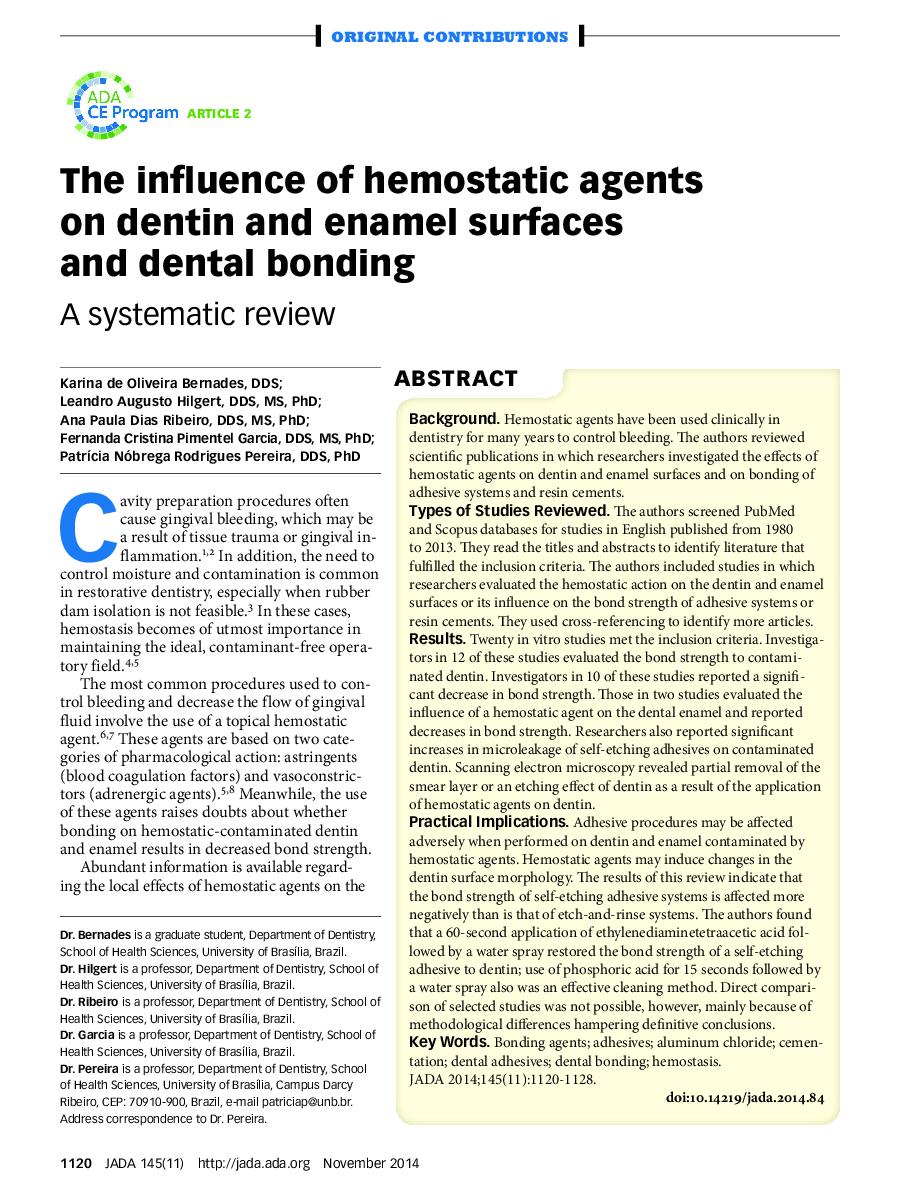| کد مقاله | کد نشریه | سال انتشار | مقاله انگلیسی | نسخه تمام متن |
|---|---|---|---|---|
| 3136697 | 1584984 | 2014 | 8 صفحه PDF | دانلود رایگان |
ABSTRACTBackground.Hemostatic agents have been used clinically in dentistry for many years to control bleeding. The authors reviewed scientific publications in which researchers investigated the effects of hemostatic agents on dentin and enamel surfaces and on bonding of adhesive systems and resin cements.Types of Studies Reviewed.The authors screened PubMed and Scopus databases for studies in English published from 1980 to 2013. They read the titles and abstracts to identify literature that fulfilled the inclusion criteria. The authors included studies in which researchers evaluated the hemostatic action on the dentin and enamel surfaces or its influence on the bond strength of adhesive systems or resin cements. They used cross-referencing to identify more articles.Results.Twenty in vitro studies met the inclusion criteria. Investigators in 12 of these studies evaluated the bond strength to contaminated dentin. Investigators in 10 of these studies reported a significant decrease in bond strength. Those in two studies evaluated the influence of a hemostatic agent on the dental enamel and reported decreases in bond strength. Researchers also reported significant increases in microleakage of self-etching adhesives on contaminated dentin. Scanning electron microscopy revealed partial removal of the smear layer or an etching effect of dentin as a result of the application of hemostatic agents on dentin.Practical Implications.Adhesive procedures may be affected adversely when performed on dentin and enamel contaminated by hemostatic agents. Hemostatic agents may induce changes in the dentin surface morphology. The results of this review indicate that the bond strength of self-etching adhesive systems is affected more negatively than is that of etch-and-rinse systems. The authors found that a 60-second application of ethylenediaminetetraacetic acid followed by a water spray restored the bond strength of a self-etching adhesive to dentin; use of phosphoric acid for 15 seconds followed by a water spray also was an effective cleaning method. Direct comparison of selected studies was not possible, however, mainly because of methodological differences hampering definitive conclusions.
Journal: The Journal of the American Dental Association - Volume 145, Issue 11, November 2014, Pages 1120–1127
